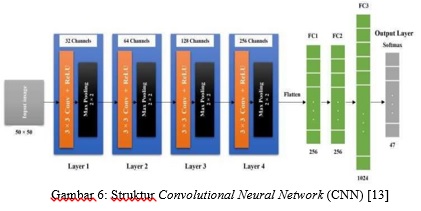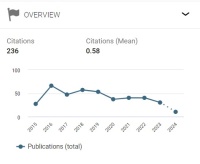Perbandingan Face Recognition dan QR Code Dalam Sistem Absensi Menggunakan Geolocation Berbasis Mobile
Abstract
Intisari— Perkembangan teknologi yang semakin canggih membuat perangkat mobile menjadi alternatif utama dalam mengelola urusan kehidupan. Perangkat mobile yang menawarkan adanya layanan dan komputasi adalah smartphone. Kecanggihan teknologi smartphone dapat dimanfaatkan untuk memproses absensi. Sistem absensi merupakan sistem yang dapat mencatat kehadiran setiap pengguna, sistem absensi dapat diproses menggunakan beberapa jenis absensi diantaranya absensi secara konvensional menggunakan tanda tangan dan absensi digital menggunakan Face Recognition dan QR code. Dalam memproses sistem absensi fitur geolocation dapat digunakan untuk mencari lokasi. Penelitian ini mempunyai tujuan untuk menjelaskan dan menentukan metode absensi digital yang terbaik antara Face Recognition dan QR code menggunakan geolocation. Berdasarkan penjelasan dari penelitian sebelumnya dan melakukan perbandingan antara metode Face Recognition dan QR code dalam memproses sistem absensi didapatkan hasil metode QR code merupakan metode terbaik untuk absensi digital karena memiliki akurasi yang tinggi dan penerapannya lebih mudah.
Kata Kunci— Sistem Absensi, Perangkat Seluler, Geolocation, Pengenalan Wajah, Kode QR.
Downloads
References
[2] J. A. J. Et al., “Tracing Students Attendance During Covid-19 Pandemic by Applying Location Detection Technology,” Psychol. Educ. J., vol. 58, no. 1, pp. 5441–5446, 2021, doi: 10.17762/pae.v58i1.2159.
[3] G. W. Wiriasto, R. W. S. Aji, and D. F. Budiman, “Design and Development of Attendance System Application Using Android-Based Flutter,” Proceeding - 2020 3rd Int. Conf. Vocat. Educ. Electr. Eng. Strength. Framew. Soc. 5.0 through Innov. Educ. Electr. Eng. Informatics Eng. ICVEE 2020, pp. 1–6, 2020, doi: 10.1109/ICVEE50212.2020.9243190.
[4] A. Rahmatulloh, R. Rianto, and M. Q. Shihab, “Point Clipping Algorithm on Employee Presence Application for Geolocation of Employee Position,” Kinet. Game Technol. Inf. Syst. Comput. Network, Comput. Electron. Control, vol. 4, no. 3, pp. 345–356, 2019, doi: 10.22219/kinetik.v4i4.796.
[5] A. S. Dewi and A. Amiruddin, “A User Authentication Scheme Using Real-Time Location, QR-Code, and One Time Password: A Preliminary Work,” Proc. - 2nd 2018 Int. Conf. Electr. Eng. Informatics, ICELTICs 2018, pp. 67–71, 2018, doi: 10.1109/ICELTICS.2018.8548786.
[6] Z. An, W. Deng, J. Hu, Y. Zhong, and Y. Zhao, “APA: Adaptive Pose Alignment for Pose-Invariant Face Recognition,” IEEE Access, vol. 7, no. c, pp. 14653–14670, 2019, doi: 10.1109/ACCESS.2019.2894162.
[7] J. Neves and H. Proenca, “‘A leopard cannot change its spots’: Improving Face Recognition using 3D-based caricatures,” IEEE Trans. Inf. Forensics Secur., vol. 14, no. 1, pp. 151–161, 2019, doi: 10.1109/TIFS.2018.2846617.
[8] J. Y. Choi and B. Lee, “Ensemble of Deep Convolutional Neural Networks with Gabor Face Representations for Face Recognition,” IEEE Trans. Image Process., vol. 29, no. c, pp. 3270–3281, 2020, doi: 10.1109/TIP.2019.2958404.
[9] A. Sepas-Moghaddam, A. Etemad, F. Pereira, and P. L. Correia, “CapsField: Light Field-Based Face and Expression Recognition in the Wild Using Capsule Routing,” IEEE Trans. Image Process., vol. 30, pp. 2627–2642, 2021, doi: 10.1109/TIP.2021.3054476.
[10] N. Hermanto, Nurfaizah, W. M. Baihaqi, and Sarmini, “Implementation of QR code and imei on android and web-based student presence systems,” Proc. - 2018 3rd Int. Conf. Inf. Technol. Inf. Syst. Electr. Eng. ICITISEE 2018, pp. 276–280, 2018, doi: 10.1109/ICITISEE.2018.8721009.
[11] A. Chomklin, L. N. Nongkhai, and P. Padungpattanadis, “Class Attendance Recording using QR code via Smartphone,” Proc. 2019 4th Int. Conf. Inf. Technol. Encompassing Intell. Technol. Innov. Towar. New Era Hum. Life, InCIT 2019, pp. 173–178, 2019, doi: 10.1109/INCIT.2019.8912099.
[12] S. Arora, D. C. Verma, and V. A. Athavale, “A secured automated Attendance Management System implemented with Secret Sharing Algorithm,” PDGC 2020 - 2020 6th Int. Conf. Parallel, Distrib. Grid Comput., pp. 141–145, 2020, doi: 10.1109/PDGC50313.2020.9315854.
[13] A. Nuhi, A. Memeti, F. Imeri, and B. Cico, “Smart Attendance System using QR code,” 2020 9th Mediterr. Conf. Embed. Comput. MECO 2020, pp. 8–11, 2020, doi: 10.1109/MECO49872.2020.9134225.
[14] S. Mishra, C. Kumar, A. Ali, and J. Bala, “Online Attendance Monitoring System Using QR code (OAMS),” Proc. 2021 2nd Int. Conf. Intell. Eng. Manag. ICIEM 2021, pp. 379–384, 2021, doi: 10.1109/ICIEM51511.2021.9445304.
[15] J. J. S. Casunuran et al., “Quick response code attendance system with SMS location tracker,” IEEE Reg. 10 Annu. Int. Conf. Proceedings/TENCON, vol. 2020-Novem, pp. 373–378, 2020, doi: 10.1109/TENCON50793.2020.9293769.
[16] A. S. Shahab and R. Sarno, “Android application for presence recognition based on face and geofencing,” Proc. - 2020 Int. Semin. Appl. Technol. Inf. Commun. IT Challenges Sustain. Scalability, Secur. Age Digit. Disruption, iSemantic 2020, pp. 208–213, 2020, doi: 10.1109/iSemantic50169.2020.9234253.
[17] C. Engineering, S. A. Azeem, C. Engineering, C. Engineering, M. G. Veena, and C. Engineering, “A Smart Attendance System based on Machine learning,” pp. 1–7, 2019.
[18] Chandra, M. Feisal Fransditya Mulyananda, M. A. Gunawan, F. L. Gaol, and T. Oktavia, “Application of ‘face recognition’ technology for attendance management system,” J. Adv. Inf. Technol., vol. 12, no. 3, pp. 260–266, 2021, doi: 10.12720/jait.12.3.260-266.
[19] K. K. A. Viola-jones, D. Kehadiran, K. Vision, and P. Wajah, “Sistem Monitoring Kehadiran Perkuliahan Berbasis,” vol. 18, no. 1, pp. 119–126, 2019.
[20] M. Gopila and D. Prasad, “Machine learning classifier model for attendance management system,” Proc. 4th Int. Conf. IoT Soc. Mobile, Anal. Cloud, ISMAC 2020, pp. 1034–1039, 2020, doi: 10.1109/I-SMAC49090.2020.9243363.
[21] A. Saputra, M. Sudarma, and D. M. Wiharta, “Sistem Pelaporan Parkir Liar Berbasis Geolocation di Kota Denpasar,” Maj. Ilm. Teknol. Elektro, vol. 18, no. 1, p. 127, 2019, doi: 10.24843/mite.2019.v18i01.p19.
[22] N. N. Dananjaya, I. B. G. Manuaba, and L. Linawati, “Rancang Bangun Aplikasi Mobile QR Code Untuk Validasi Pajak Reklame,” Maj. Ilm. Teknol. Elektro, vol. 20, no. 1, p. 131, 2021, doi: 10.24843/mite.2021.v20i01.p15.
[23] S. Arora, D. C. Verma, and V. A. Athavale, “A secured automated Attendance Management System implemented with Secret Sharing Algorithm,” PDGC 2020 - 2020 6th Int. Conf. Parallel, Distrib. Grid Comput., pp. 141–145, 2020, doi: 10.1109/PDGC50313.2020.9315854.
[24] N. Hermanto, Nurfaizah, W. M. Baihaqi, and Sarmini, “Implementation of QR code and imei on android and web-based student presence systems,” Proc. - 2018 3rd Int. Conf. Inf. Technol. Inf. Syst. Electr. Eng. ICITISEE 2018, pp. 276–280, 2018, doi: 10.1109/ICITISEE.2018.8721009.
[25] X. Bai, F. Jiang, T. Shi, and Y. Wu, “Design of attendance system based on Face Recognition and android platform,” Proc. - 2020 Int. Conf. Comput. Network, Electron. Autom. ICCNEA 2020, pp. 117–121, 2020, doi: 10.1109/ICCNEA50255.2020.00033.


This work is licensed under a Creative Commons Attribution-NonCommercial-NoDerivatives 4.0 International License.

This work is licensed under a Creative Commons Attribution 4.0 International License




